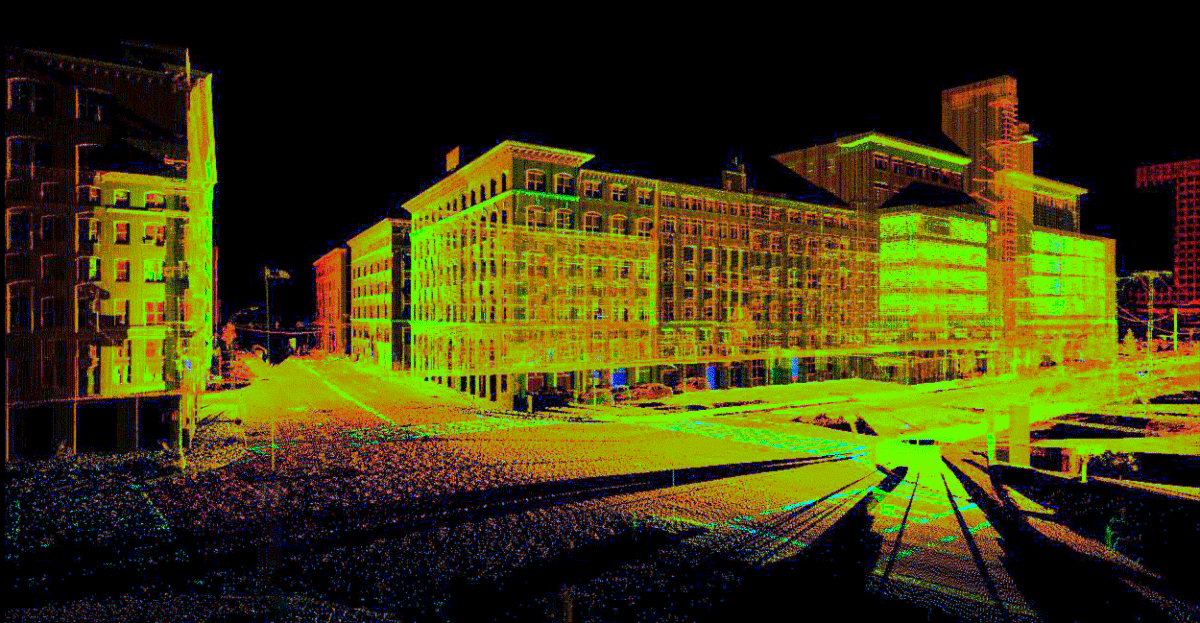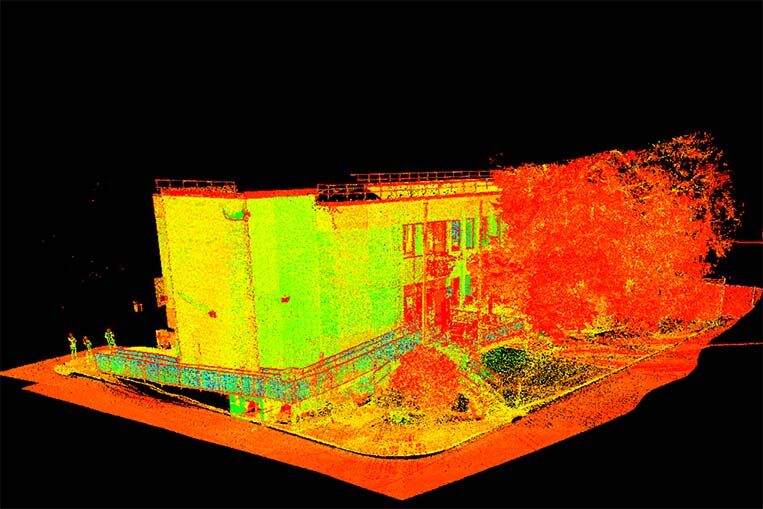How 3D Scanning Elevates Design Outcomes
Wiki Article
How 3D Laser Scanning Changes Architectural Design and Building And Construction Projects
3D laser scanning is transforming the landscape of architectural layout and building and construction. This modern technology offers unequaled precision in capturing existing environments, which facilitates better project planning and implementation. It decreases errors while improving effectiveness in numerous stages of advancement. The ramifications for collaboration amongst designers, engineers, and other stakeholders are significant. These improvements open up the door to brand-new design possibilities and cutting-edge remedies. What lies ahead for this developing innovation?The Basics of 3D Laser Scanning Modern Technology
3D laser scanning innovation might seem facility, its core principles are transformative and straightforward for building layout. This modern technology utilizes laser light beams to record exact dimensions of physical frameworks, creating a thorough factor cloud that represents the scanned environment. A laser scanner gives off rapid pulses of light, determining the moment it takes for the light to return, which enables the estimation of ranges with exceptional precision.The resulting factor cloud can be converted into a 3D version, providing engineers with very useful visual information. This model enables professionals to analyze and control design aspects within their projects, permitting innovative remedies and enhanced visualization. By utilizing 3D laser scanning, architects can better recognize the status quo of a website, making certain that new designs balance with their environments. This assimilation of technology right into architectural layout marks a significant advancement, fostering imagination and accuracy in the area.

Enhancing Accuracy and Performance in Architectural Projects
As building projects significantly require precision and speed, 3D laser scanning becomes an essential tool in boosting both precision and performance. This technology catches millions of data points in a quick timeframe, creating in-depth and exact 3D versions of existing structures. The ability to get exact measurements decreases the threat of mistakes during the style stage, enabling designers to visualize their tasks with unmatched clearness.The rapid data collection procedure minimizes the time spent on-site, enabling groups to concentrate on analysis and design enhancements. With real-time data schedule, adjustments can be made quickly, promoting a more structured operations. The integration of 3D laser scanning right into building methods not only enhances dimension accuracy however also boosts the total job timeline, promoting quicker decision-making. In a sector where precision is vital, this technology stands as a transformative pressure, raising the criteria of architectural design and building and construction projects.
Improving Collaboration Among Stakeholders
While standard architectural processes often include fragmented interaction among stakeholders, 3D laser scanning promotes an extra cohesive joint atmosphere. By offering exact, high-resolution data, this technology enables architects, customers, engineers, and contractors to operate from a unified point of referral. The comprehensive visualizations produced through laser scanning get rid of uncertainties and false impressions, making certain that all events have access to the very same info.This openness boosts decision-making and urges timely feedback, as stakeholders can quickly imagine layout components and spatial relationships. On top of that, the combination of 3D scanning data right into Structure Details Modeling (BIM) systems further streamlines partnership, permitting real-time updates and adjustments. Such smooth interaction not just minimizes conflicts but also accelerates project timelines, as all stakeholders remain aligned throughout the design and building phases. Ultimately, 3D laser scanning transforms conventional operations right into a more efficient and joint procedure, benefiting all parties involved.
Unlocking Creative Possibilities in Style
By making it possible for architects to imagine complex spatial partnerships and detailed details, 3D laser scanning reveals innovative opportunities in style. This modern technology permits for exact mapping of existing atmospheres, enabling engineers to check out innovative principles that may have previously appeared not practical. With highly exact information, designers can try out non-traditional forms and products, pushing the limits of traditional style.The assimilation of 3D laser scanning into the layout process fosters cooperation amongst multidisciplinary teams, motivating the exchange of ideas and enhancing creativity. The in-depth visualizations generated by this innovation not just aid in recognizing prospective layout challenges however also influence remedies that might not have actually been thought about. Therefore, designers can develop more appealing and vibrant rooms that resonate with individuals while fulfilling practical needs. Ultimately, 3D laser scanning changes the building landscape, empowering developers to recognize their visions with extraordinary accuracy and creativity.
The Future of 3D Laser Scanning in Architecture and Construction
The assimilation of 3D laser scanning right into architectural design not only improves creative thinking yet also sets the stage for its progressing duty in the future of architecture and building. As modern technology advancements, the precision and performance of laser scanning will remain to enhance, allowing engineers and home builders to develop extra intricate designs with precision - 3D Scanning. Making use of this technology in real-time information collection will certainly facilitate better decision-making, reducing errors and streamlining workflowsFuture applications may consist of virtual and increased truth combinations, allowing stakeholders to envision tasks in immersive atmospheres. On top of that, as sustainability comes to be view it now a concern, 3D laser scanning will certainly support the advancement of energy-efficient styles by offering comprehensive insights into existing frameworks. As cooperation amongst various disciplines comes to be even more crucial, the capacity to share exact 3D versions will certainly foster innovation and boost task results. Ultimately, 3D laser scanning will redefine standards in building design and construction techniques.
Frequently Asked Concerns
What Is the Cost of Implementing 3D Laser Scanning Modern Technology?

Just how Lengthy Does a Normal 3D Laser Scanning Task Take?
A regular 3D laser scanning task can take anywhere from a couple of hours to a number of days, depending upon elements such as the project's size, intricacy, and the degree of detail required for accurate information capture.What Sorts Of Projects Advantage A Lot Of From 3D Laser Scanning?
3D laser scanning benefits various tasks, specifically large building and constructions, historic restorations, and complex renovations. It boosts accuracy in measurements, lowers mistakes, and supplies comprehensive information important for efficient preparation and execution in building style and building.
Exist Particular Software Program Programs Required for 3D Laser Scans?
Yes, specific software application programs are crucial for processing 3D laser scans. 3D Scanning. Popular choices include Autodesk Wrap-up, Faro Scene, and Leica Cyclone, each offering one-of-a-kind features tailored for evaluating and envisioning scanned data successfully in various jobsJust How Does 3D Laser Scanning Impact Environmental Sustainability in Building?
3D laser scanning boosts ecological sustainability in construction by reducing material waste, enabling accurate measurements, and promoting efficient resource use. This technology allows for better preparation, lowering the eco-friendly impact of building and construction tasks via enhanced accuracy and effectiveness.3D laser scanning is transforming the landscape of architectural layout and building and construction. 3D laser scanning modern technology might seem complicated, its core principles are straightforward and transformative for building style. By allowing designers to envision intricate spatial partnerships and complex details, 3D laser scanning exposes creative opportunities in layout. The combination of 3D laser scanning into the layout process fosters partnership among multidisciplinary teams, view website encouraging the exchange of concepts and improving creativity. The combination of 3D laser scanning right into pop over to this site architectural design not only improves imagination yet likewise sets the phase for its evolving role in the future of design and building.
Report this wiki page